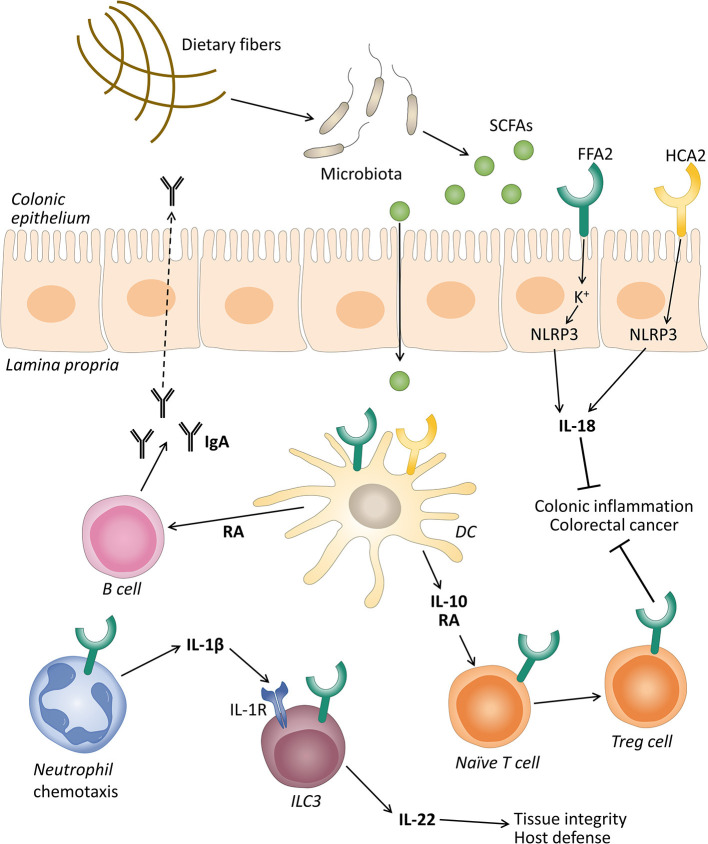Figure 1.
The role of free fatty acid receptor 2 (FFAR2) and hydroxycarboxylic acid receptor 2 (HCAR2) in gut homeostasis. Gut microbiota ferment dietary fibers into short-chain fatty acids (SCFAs), and these can activate their receptors expressed on intestinal epithelial cells and immune cells like neutrophils, dendritic cells (DC), and innate lymphoid cells 3 (ILC3). The activation of FFAR2 and HCAR2 in intestinal epithelial and DC promotes the secretion of interleukin (IL)-18 via inflammasome activation, and IL-10, respectively. IL-10 in turn promotes the differentiation and proliferation of T regulatory (Treg) cells that together with IL-18 protect against conditions leading to colonic inflammation and colorectal cancer. SCFAs through FFAR2 induce neutrophil chemotaxis to inflammatory sites and production of IL-1β. IL-1β engages an IL-1 receptor (IL-1R) on ILC3, promoting IL-22 production that will contribute to tissue integrity and host defense. SCFAs can also stimulate the intestinal immunoglobulin A (IgA) secretion by B cells, induced by retinoic acid (RA) production, although this mechanism is still debated.

